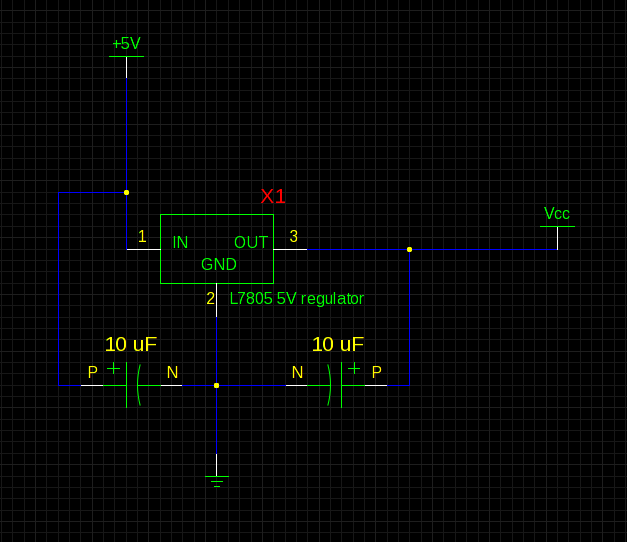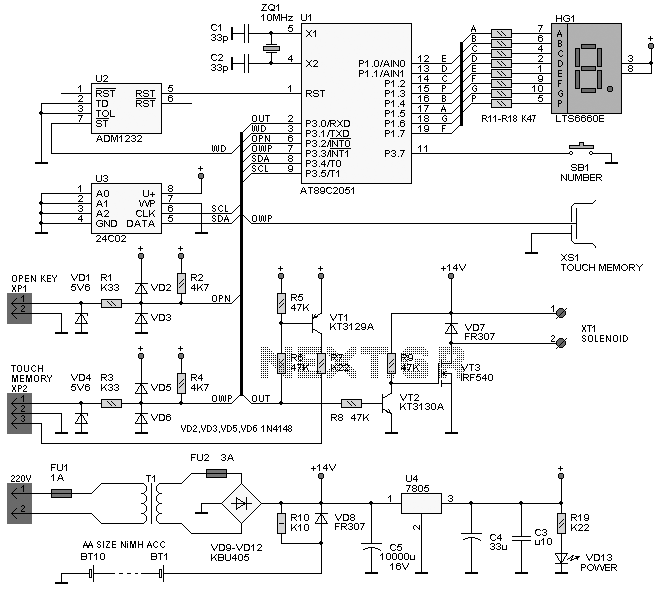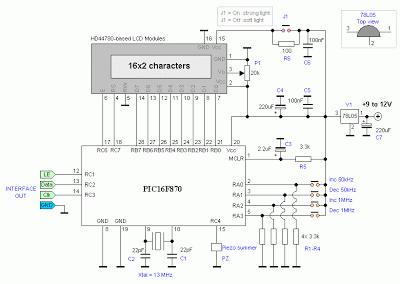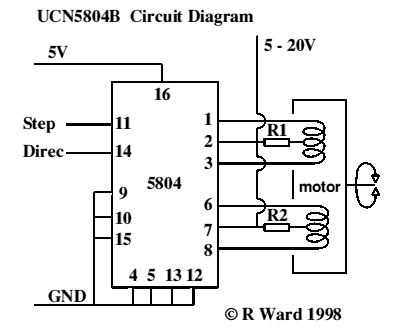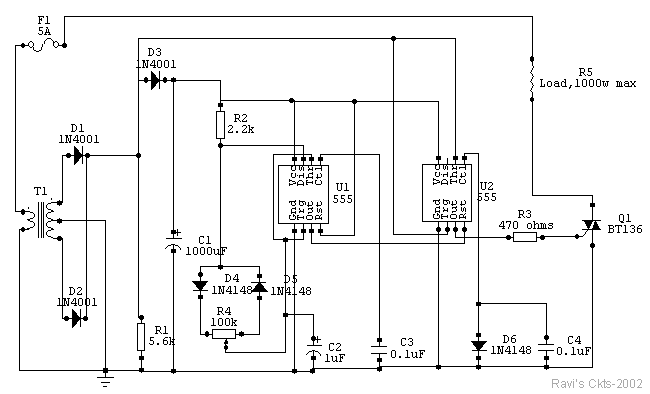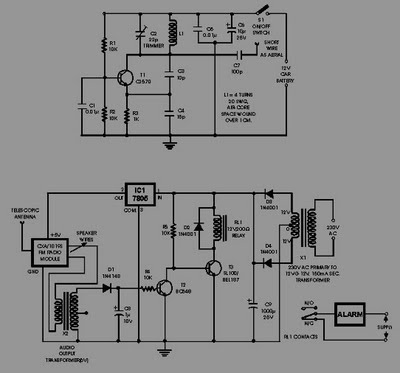
Temperature Controller
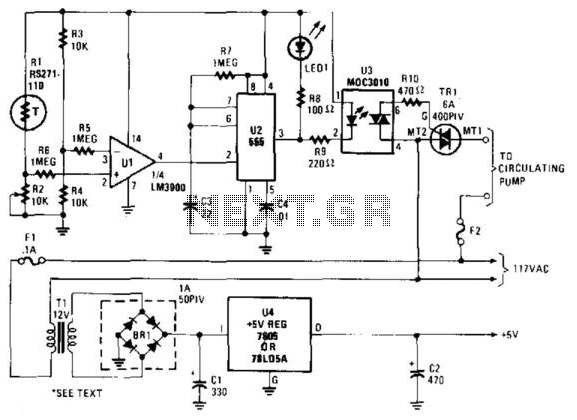
A thermistor (R1) is compared with a reference resistor (R2) in a Wheatstone bridge circuit. The output of comparator U1 goes high, which triggers U2. U2 introduces a delay of approximately 25 seconds. After 15 seconds, LED1 illuminates, U3 is activated, triac TR1 is triggered, and a hot water pump is turned on. This system is utilized with a hot water heater.
The described circuit utilizes a Wheatstone bridge configuration to monitor temperature changes via a thermistor (R1). In this setup, the thermistor's resistance varies with temperature, altering the voltage across the bridge. The reference resistor (R2) provides a stable comparison point, allowing the comparator (U1) to detect when the thermistor's resistance falls below or exceeds a predetermined threshold.
When the comparator (U1) detects a significant change in the thermistor's resistance, its output transitions to a high state. This transition activates the subsequent stage of the circuit, which is a delay timer (U2). The delay timer is set to approximately 25 seconds, providing a buffer period before subsequent actions are taken. Notably, after a 15-second interval, an LED (LED1) is illuminated, serving as a visual indicator that the system is in an active state.
Following the LED indication, another component (U3) is actuated, which likely controls the power delivery to the triac (TR1). The triac serves as a solid-state relay, allowing for the control of higher voltage and current loads, such as the hot water pump. When TR1 is triggered, it completes the circuit for the hot water pump, enabling it to operate and circulate water, thus facilitating the heating process in conjunction with the hot water heater.
This system exemplifies a practical application of temperature sensing and control in an automated hot water heating system, demonstrating the integration of analog and digital components to achieve reliable operation. The design ensures that the water heating process is initiated only when necessary, promoting energy efficiency and user convenience. A thermistor (RI) is compared with a reference (R2) in a Wheatstone-bridge circuit. Comparator Ul"s output goes high , which triggers U2. U2 is a delay of about 25 s. After 15 s, LED1 lights, U3 actuates, triac TRl triggers, and turns on a hot water pump. This system was used with a hot-water heater. 🔗 External reference
The described circuit utilizes a Wheatstone bridge configuration to monitor temperature changes via a thermistor (R1). In this setup, the thermistor's resistance varies with temperature, altering the voltage across the bridge. The reference resistor (R2) provides a stable comparison point, allowing the comparator (U1) to detect when the thermistor's resistance falls below or exceeds a predetermined threshold.
When the comparator (U1) detects a significant change in the thermistor's resistance, its output transitions to a high state. This transition activates the subsequent stage of the circuit, which is a delay timer (U2). The delay timer is set to approximately 25 seconds, providing a buffer period before subsequent actions are taken. Notably, after a 15-second interval, an LED (LED1) is illuminated, serving as a visual indicator that the system is in an active state.
Following the LED indication, another component (U3) is actuated, which likely controls the power delivery to the triac (TR1). The triac serves as a solid-state relay, allowing for the control of higher voltage and current loads, such as the hot water pump. When TR1 is triggered, it completes the circuit for the hot water pump, enabling it to operate and circulate water, thus facilitating the heating process in conjunction with the hot water heater.
This system exemplifies a practical application of temperature sensing and control in an automated hot water heating system, demonstrating the integration of analog and digital components to achieve reliable operation. The design ensures that the water heating process is initiated only when necessary, promoting energy efficiency and user convenience. A thermistor (RI) is compared with a reference (R2) in a Wheatstone-bridge circuit. Comparator Ul"s output goes high , which triggers U2. U2 is a delay of about 25 s. After 15 s, LED1 lights, U3 actuates, triac TRl triggers, and turns on a hot water pump. This system was used with a hot-water heater. 🔗 External reference
